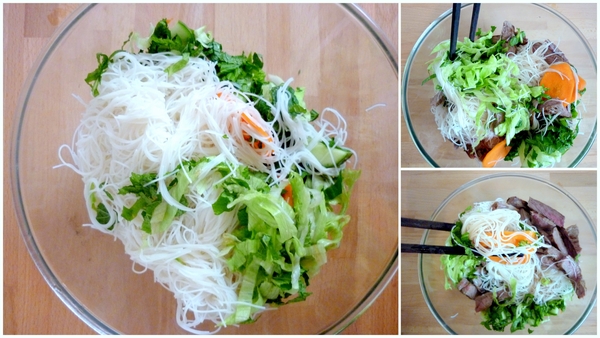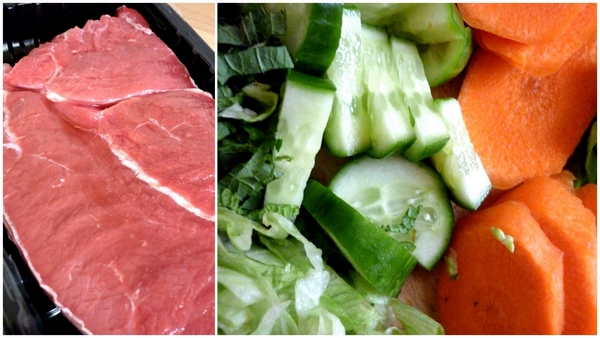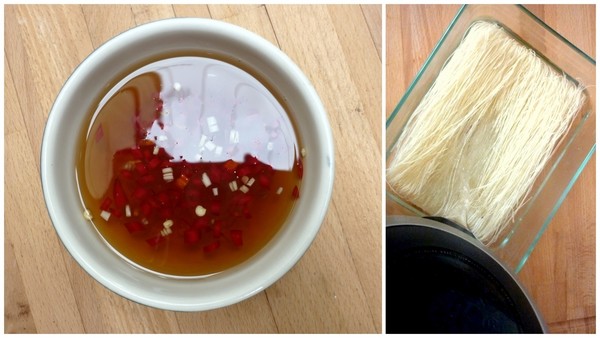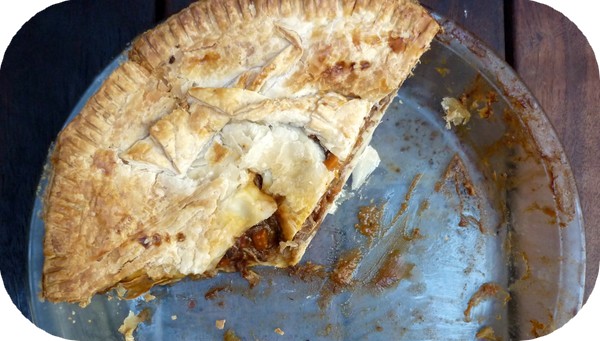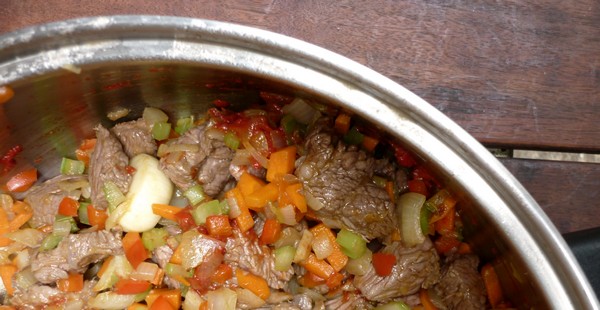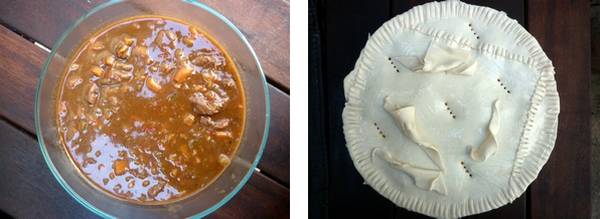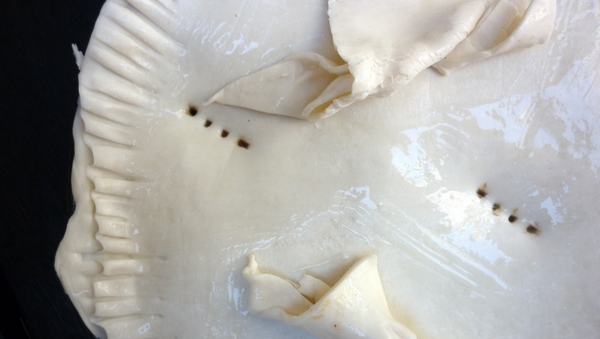These days, you can’t turn on the TV without the giant head of a celebrity chef glaring back at you. Food is one of the most popular topics on television, with Masterchef, My Kitchen Rules and a raft of ABC and SBS food programming available. It is also one of the top topics for blogs, after technology, fashion, celebrity gossip and…how to make money from blogging. In fact, in 2010, a total of 88 new food blogs were started in Sydney alone (*cough* Corridor Kitchen *cough*). Appearances by Jamie Oliver elicit Beatles-fan-like reactions of screaming and fainting. Nigella Lawson’s recent visit to Australia had pilgrims flocking to Melbourne from a Master class. Visiting a café is considered an activity in and of itself. There is an entire pay TV channel, Lifestyle food, devoted to food. We are a nation of foodies obsessed.
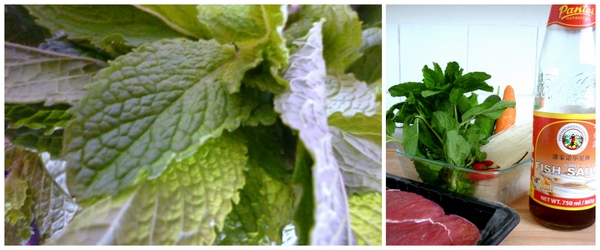
As a food blogger, I feel a complicated mixture of fascination with and a desperate yearning to avoid this trend, even though I am clearly a participant. But I do have my favourite food-related productions, blogs and books, as does most anyone who enjoys food. I devoured Michael Pollan’s ‘In Defence of Food’ in an afternoon. When I discovered Lisa Fain’s blog Homesick Texan I read every single entry over the course of a month. And I watched every episode of Meave O’Meara’s Food Safari on SBS, my boyfriend later purchasing all three series’ on DVD. When they arrived, I scoured the special features for new recipes.
What works so well about the show is the way it reveals how people really cook in their own homes. Food Safari covers 35 of the cuisines you will find in Australia. Each episode covers basic ingredients, dishes and cooking methods as chefs and home cooks alike present recipes their own kitchens. Often these recipes are thought of as nothing special by those who make them, but through sharing them, they realise how special they really are. It’s also heartening to see how family businesses often start through necessity- e.g. through not being able to find kimchi or tofu or mozzerella in Australia, kimchi and tofu and mozzerella factories spring up!
One of the Food Safari recipes I often cook is Bun bo xao, a rice noodle salad with stir fried beef. The recipe is presented by Chef Luke Nguyen, chef at Surry Hills’ Red Lantern and host of Luke Nguyen’s Vietnam on SBS. Because I am a lazy cook at heart, and perhaps because I was a vegetarian for 10 years I cut the meat after I cook it. This makes my version a little more like your standard Sydney Thai beef salad than a Bun. I can’t make any claims about how food in Thailand or Vietnam is prepared- unfortunately, I’ve never visited either country.
A quick tip: The nuoc cham will keep for ages in the fridge so don’t worry that you’ve made too much. The Food Safari recipe makes about enough for 4 people.
Bun bo (adapted from Luke Nguyen’s recipe as featured on Food Safari)
Serves 2
200g – 300g sirloin or rump steak or any lean, boneless steak at least 2cm thick
3 Tablespoons fish sauce
1 tsp finely chopped lemongrass
Canola spray
200g thin rice vermicelli
Boiling water
2 large iceburg lettuce leaves
1/2 small bunch mint
6 perilla leaves (optional)
1 carrot
1 spring onion
1 lebanese cucumber
Nuoc cham
Pour the fish sauce and lemongrass over the steak. Cover and 5-10 minutes in the fridge.
Make the nuoc cham as per recipe.
Soak the noodles in boiling water for 2 minutes, chop up with scissors, drain and rinse with cold water.
Finely shred lettuce, perilla and mint, finely slice carrot and spring onion and slice cucumber lengthways and chop. Place in a colander with rice noodles and rinse. Be sure everything is properly drained so the salad won’t get soggy.
Heat a frying pan to very hot. Place whole steak in and sear. Cook for around 2 minutes and turn to cook other side. It really depends how you like it as to how long you cook it. The important thing is that it is cooked on a very high heat.
Separate the vegetables and noodles between 2 large bowls. Immediately slice the steak into thin strips, across the grain and divide between the bowls. Spoon over some nuoc cham and serve. The idea is for each person to stir up their salad themselves, adding more nuoc cham to taste.
What’s you fave product of foodie-ism?
There are some foods that are inextricably linked to national identity, considered representative or symbolic of a nation. As Australia post-1788 doesn’t have a long culinary history, we only have a few foods that are really seen as (almost) uniquely Australian; vegemite, the lamington, the pavlova, damper, fairy bread and the Aussie BBQ. But there is one food in particular that expats all over crave, never realising how great their love of it before they leave home- the meat pie.
Of course it’s by no means clear-cut. Food icons are not divided by national boundaries anymore than any other cultural phenomena. For example, almost all the foods that I mentioned above as ‘(almost) uniquely Australian’ are claimed by New Zealand as well. And of course food nostalgia can hit you for any tasty treat or even for foods you don’t like. They don’t even have to be linked to your history or your country. But there is definitely a strong link between national identity and food.
Although making pie from meat is by no means unique to Australia, other than New Zealand there is no other country I’ve come across where virtually everywhere you go, you can grab a pie. This isn’t to say we eat them often; I might have two pies in a whole year, but when you go overseas and you can’t just grab a pie it’s a culture shock. And that to me is the measure of an iconic food. That feeling, a kind of a mix of longing, disbelief and of course hunger when you can’t find that food you’re so used to being able to grab wherever you go. In fact, that may be why I’ll only get around to eating two meat pies in a year: I know they’ll always be there and thus take them for granted.
The pies you get at every local bakery, servo and supermarket in Australia are, like any mass-produced food, incredibly different from the kind you’d make at home. In fact, a home-made pie makes no attempt to imitate a mass-produced one, and vice versa. But they are delicious in their own way; flaky, hot and with tender beef chunks, slathered in or (god forbid) without tomato sauce. There is no wrong way to eat it and no wrong time – the Aussie beef pie suits all occasions. You could even serve one up this Australia day…
Aussie Beef Pie
500g chuck steak, diced
2 Tablespoons olive oil
2 cloves garlic, finely chopped
1 large onion, finely chopped
1 carrot, finely chopped
2 sticks celery, finely chopped
1 red capsicum, finely chopped
1 Tablespoon ground paprika
1 Tablespoon tomato paste
1 glass of wine (any kind)
1 glass of water
375ml liquid beef stock
2 bay leaves
Freshly cracked black pepper, to taste
1 cup cold water mixed with 1 Tablespoon cornflour
2 sheets frozen butter puff pastry
1 egg, lightly beaten
Tomato sauce, to serve, if desired.
In a heavy-based saucepan, heat the oil and cook the steak until sealed and browned. Transfer to a bowl.
Add the vegetables and fry until translucent, about 5 minutes. Return the beef to the pan and add the paprika and tomato paste. Stir through.
Add all the remaining ingredients except for the cornflour mixture, pastry and beaten egg. Simmer mix for 45 minutes. Stir through cornflour mixture and simmer until thick. Allow to cool and refrigerate overnight.
The next day, preheat the oven to 220 ◦c. Lightly grease a round pie dish and line with a sheet of puff pastry. Fill with the beef filling and top with a second pastry sheet. Crimp the two sheets together with a fork and cut away the excess pastry. Finally, prick some holes in the top of the pie to allow air to escape and brush the top with beaten egg.
Bake for 45 minutes or until top and bottom of pie are golden (it helps to use a Pyrex dish so you can see this happening). If the pie browns too quickly on top, cover with foil.
Allow the pie to cool for 10 minutes or so before cutting and serving with tomato sauce and any veg you prefer. For me, it steamed green beans and mashed potato. Enjoy!
What foods represent your national identity?
About me
 Sharing easy recipes, hunting down the best coffee. Honest accounts, nothing too serious. Read more...
Sharing easy recipes, hunting down the best coffee. Honest accounts, nothing too serious. Read more...Recent Posts
- Aerpress means no more shit #travelcoffee and #workcoffee
- Why I write and four ace bloggers who do it better
- The five best things I ate in London
- Shoreditch is awesome, airports are not
- I quit sugar? Do I bollocks.
- Cubao Street Food, Alexandria
- The Reformatory Caffeine Lab, Surry Hills
- Brewtown Newtown
- Stay caffeinated over Christmas
- Gumption by Coffee Alchemy, Sydney CBD
Popular posts this month…
 The quest for Mex part 2 – Feisty Chicken Burritos posted on December 21, 2010
The quest for Mex part 2 – Feisty Chicken Burritos posted on December 21, 2010  Sparkling Long Black posted on May 10, 2011
Sparkling Long Black posted on May 10, 2011 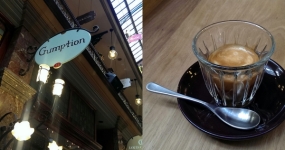 Gumption by Coffee Alchemy, Sydney CBD posted on December 13, 2013
Gumption by Coffee Alchemy, Sydney CBD posted on December 13, 2013  Review – Philips Saeco Intelia posted on January 10, 2012
Review – Philips Saeco Intelia posted on January 10, 2012  Salat Hatzilim posted on January 28, 2011
Salat Hatzilim posted on January 28, 2011  Eat. Drink. Blog. Dinner at Kingsley’s Steak and Crab House, Woolloomooloo – 5 November 2011 posted on November 11, 2011
Eat. Drink. Blog. Dinner at Kingsley’s Steak and Crab House, Woolloomooloo – 5 November 2011 posted on November 11, 2011 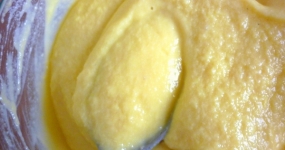 Rich Portuguese Custard posted on November 29, 2010
Rich Portuguese Custard posted on November 29, 2010 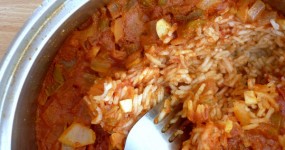 The quest for Mex part 1 – Mexican Red Rice posted on December 17, 2010
The quest for Mex part 1 – Mexican Red Rice posted on December 17, 2010
Disclaimer:
All opinions in this blog are mine, an everyday, real-life person. I do not accept payment for reviews and nor do I write sponsored posts. I do not endorse the content of the comments herein.

